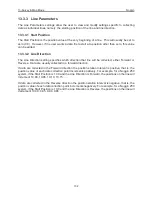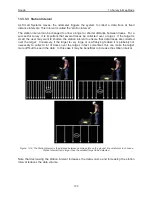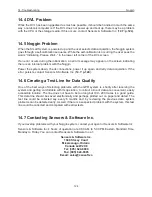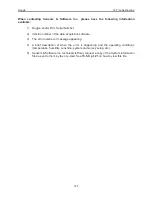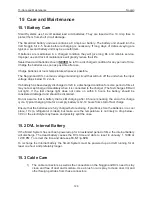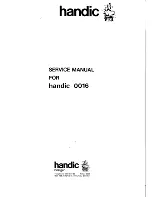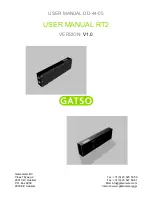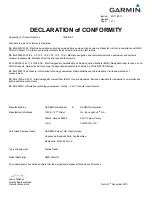
Noggin
13-Survey & Map Mode
113
The GPS information is logged to an independent file.
Note that the GPS information is NOT
automatically integrated with the Noggin data.
After data acquisition is complete, the data can
be downloaded to a PC and the software like EKKO_View Deluxe or EKKO_Mapper used to
integrate the GPS data with the Noggin data.
For the DVL to read the GPS data string, the GPS settings for the specific GPS receiver being
used must be input into this menu. There are 4 important items that must be specified correctly
for the DVL to display the GPS strings. These items are: Baud Rate, Stop Bits, Data Bits and
Parity. These are discussed in more detail below. The default values listed below are the values
that are typically used. Read the GPS Receiver User’s Guide or experiment with the settings to
find the correct ones.
Once these 4 items are set correctly you should be able to run System Test #1 and have GPS
information written to the screen.
When the logging of GPS information is enabled, during data acquisition a message will appear
in the bottom left-hand corner of the DVL screen indicating whether GPS data is successfully
being received (
13.2.4: p.79
).
13.3.5.1 GPS Mode
There are three GPS modes available:
1)
Off
mode means that a GPS receiver is not connected to the DVL so no GPS
information is being logged. This should be the setting if you do not have a GPS
receiver.
2)
Reading every x traces
mode means that every time the Noggin collects a user-
defined number of traces of GPR data, a data string of GPS information will be added
to a file. This file has the same name as the data file i.e. LINE6, but with a GPS
extension. This file can be accessed after transferring the GPR data files to an
external PC (
13.4.4: p.119
).
For example, if the number of traces is set to 1, the LINE6.GPS may look like this:
Trace #1 at position 0.00
$GPGGA,134713.00,4338.221086,N,07938.421365,W,2,06,2.1,152.51,M,-
35.09,M,5.0,0118*79
$GPVTG,34.0,T,,,001.4,N,002.5,K,D*70
$GPGSA,A,3,30,26,10,13,24,06,,,,,,,4.2,2.1,3.6*36
Trace #2 at position 0.05
$GPGGA,134713.00,4338.221086,N,07938.421365,W,2,06,2.1,152.51,M,-
35.09,M,5.0,0118*79
$GPVTG,34.0,T,,,001.4,N,002.5,K,D*70
$GPGSA,A,3,30,26,10,13,24,06,,,,,,,4.2,2.1,3.6*36
Trace #3 at position 0.10
$GPGGA,134713.00,4338.221086,N,07938.421365,W,2,06,2.1,152.51,M,-
35.09,M,5.0,0118*79
$GPVTG,34.0,T,,,001.4,N,002.5,K,D*70
$GPGSA,A,3,30,26,10,13,24,06,,,,,,,4.2,2.1,3.6*36
Trace #4 at position 0.15
$GPGGA,134713.00,4338.221086,N,07938.421365,W,2,06,2.1,152.51,M,-
35.09,M,5.0,0118*79
$GPVTG,34.0,T,,,001.4,N,002.5,K,D*70
$GPGSA,A,3,30,26,10,13,24,06,,,,,,,4.2,2.1,3.6*36
Summary of Contents for Noggin 100
Page 1: ...User s Guide Copyright 2012 Sensors Software Inc 2011 00022 02 Noggin ...
Page 2: ......
Page 4: ......
Page 8: ......
Page 17: ...Noggin 2 Noggin Components 3 Figure 2 3 Noggin 100 components ...
Page 156: ...Appendix D Instrument Interference Noggin D 2 ...
Page 158: ...Appendix E Safety Around Explosive Devices Noggin E 2 ...
Page 162: ...Noggin G 4 ...




